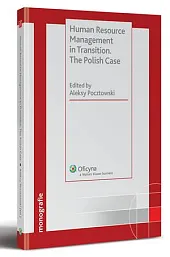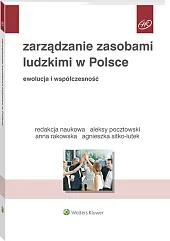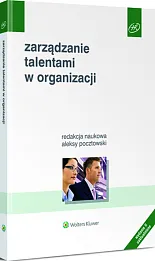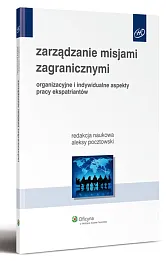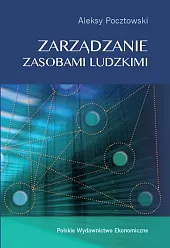This book is an attempt to reflect on HRM (Human Resource Management) in Poland between 1989 and 2009.
-40%
Human Resource Management in Transition. The Polish Case
Human Resource Management in Transition. The Polish Case
Opis publikacji
- This book is an attempt to reflect on HRM (Human Resource Management) in Poland between 1989 and 2009. It is based on the theoretical studies and empirical analyses undertaken by the Chair of Human Capital Management at the Cracow University of Economics, as well as on the results of other empirical research available on the market.
- The intention of the authors, who are all researchers at the Chair, was above all to capture the principal changes that have taken place in the field of HRM in Poland. Due to the unprecedented scope and the fast pace of the changes, analyses of the same issue have often led to disparate results, depending on the time when they were performed, the sector they were related to, or the sample selected. In that context, it was both interesting and difficult to examine the manner in which the theoretical concepts prevailing in the world at the time managed to find their place in Polish reality, at a time of economic and soc...
- This book is an attempt to reflect on HRM (Human Resource Management) in Poland between 1989 and 2009. It is based on the theoretical studies and empirical analyses undertaken by the Chair of Human Capital Management at the Cracow University of Economics, as well as on the results of other empirical research available on the market.
- The intention of the authors, who are all researchers at the Chair, was above all to capture the principal changes that have taken place in the field of HRM in Poland. Due to the unprecedented scope and the fast pace of the changes, analyses of the same issue have often led to disparate results, depending on the time when they were performed, the sector they were related to, or the sample selected. In that context, it was both interesting and difficult to examine the manner in which the theoretical concepts prevailing in the world at the time managed to find their place in Polish reality, at a time of economic and social transformation. This volume is a welcome addition to the growing literature on the transition process and its consequences in Central & Eastern Europe. Written by local subject experts with detailed knowledge of Human Resource Management in context, it provides the reader with a meticulous, up-to-date account of people management practices and perspectives in Poland, along with unravelling the unique shaping influences impacting human resource management at operational and strategic levels.
Professor Michael J Morley, Kemmy Business School,
University of Limerick, Ireland
University of Limerick, Ireland
Informacje
Rok publikacji: 2010
Wydanie: 1
Liczba stron: 228
Seria: Monografie ekonomiczne
Okładka:
Format: A5 (148 × 210 mm)
Wersja publikacji: Książka papier
ISBN: 978-83-264-1178-6
Kod towaru: OFE-0591 W01P01
Dane producenta: Wolters Kluwer Polska sp. z o.o. | Przyokopowa 33 | 01-208 | Warszawa | PL | pl-obsluga.profinfo@wolterskluwer.com | 801 04 45 45
Spis treści
Autorzy
Opinie
Książka dostępna w różnych formatach Przewodnik po formatach
Dlaczego Profinfo.pl?
Ponad 10 tys. tytułów
Darmowa dostawa już od 180zł
Czat online z konsultantem
Promocyjne ceny i rabaty
Sprawna realizacja zamówienia
Dostęp do ebooka w 5 minut



